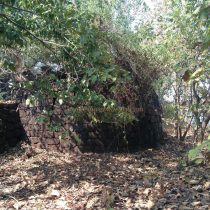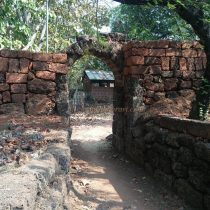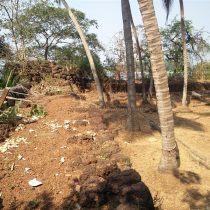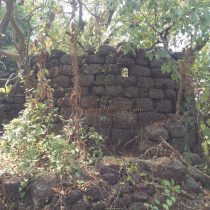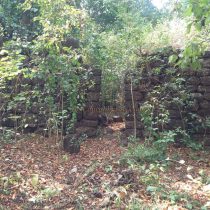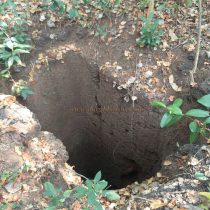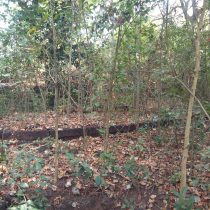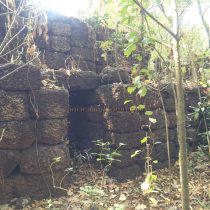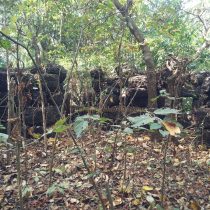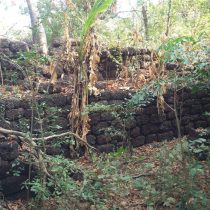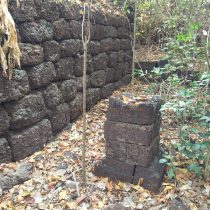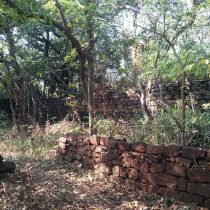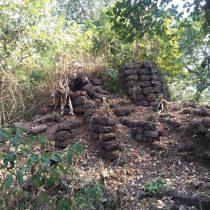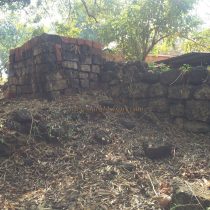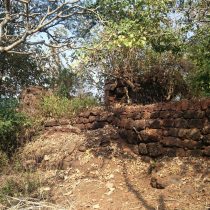SARJEKOT-SINDHUDURG
TYPE : COASTAL FORT
DISTRICT : SINDHUDURG
HEIGHT : 0
GRADE : EASY
Sindhudurg district is known as Sindhudurg because of this fort. It is said that not being able to go to Malvan and see Sindhudurg fort is equal to not being able to go to the temple and pray to God. Therefore, many tourists come here to see the Sindhudurg fort. But when going to the temple, some people forget to pray to the Nandi or the Kasav. Something similar happens with the forts around the Sindhudurg fort. While constructing the Sindhudurg fort, Shivaji Maharaj built a chain of forts like Padmagad, Rajkot, and Sarjekot in the vicinity to protect it. The majority of the tourists only visit Sindhudurg fort, rest all the forts in the vicinity of Sindhudurg have been neglected. Malvan was a port in ancient times, although, it was not so convenient in the rainy season as it was near the open sea.
...
The Gad river which originates in Sahyadri is known as Kalaval creek in Konkan. As the mouth of the Kalaval creek splits, the water gets divided and its momentum is slowed down thus there are fewer waves in this region. For this, during the rainy season, the Maratha navy was plowed in Kalaval Bay. Sarjekot was built at the mouth of Kalaval Bay, 2.5 miles north of Sindhudurg fort, to support and protect the navy. To visit Sarjekot, you have to reach kolamb on Malvan Achara Road at a distance of 4 km from Malvan. On the way from the village to the shore, a road goes a little to the left of the shore. At the end of this road is a small arched gate of Sarjekot fort. Inside the door, there is a guard's porch on both sides, and on the right side of the road, at some distance, there is a small water cistern. Going straight ahead on the road, you can see the path going down on the left side of the ramparts. As this road is closed at the bottom, the purpose behind this structure is not realized. There are three houses on the left side as you enter through the door and since Sarjekot is their private property, the coconut orchards they have built have flattened the old remains. There is a well in the yard of one of these houses and the water of this well is still in use today. The fort is square and is spread over an area of 2 acres. The fort is divided into two parts the citadel and Outer Fort. The fort is composed of the sea on one side and land on three sides and at one end of the fort, there is a citadel. There are a total of ten bastions on the ramparts of the fort, out of which four bastions are on the ramparts of the fort and three bastions are towards the sea. One of the ten bastions is square-shaped, and as the original bastion may have been collapsed, this bastion might have been rebuilt later. The fort is composed of land on three sides and sea on one side. The fort is said to have a moat 10 feet wide and 10 feet deep on three sides, but today this size of the moat can only be seen on the outer side of the citadel. The fort was constructed out of stone and no mixture was used to join the construction. Except for the two bastions and some ramparts of the fort, all other structures are still in good condition. It is possible to enter the fort from the courtyard of the house and this road in the ramparts is very narrow. The area of the citadel is very small and you can see a well, Tulsi Vrindavan, and quadrangle structures of houses in it. Inside the ramparts are a toilet and a staircase to the top of the ramparts. You can take a detour around the fort by the ramparts. Although the fort has a large number of thorny bushes and trees, the ramparts are still in good condition. The entire ramparts of the fort have barrage to shoot the enemy and huge vents in the bastions to fire cannons. One hour is enough to see the whole fort from the inside out. Sarjekot fort was built along with Sindhudurg between 1664 and 1667. When the Portuguese attacked Sindhudurg in 1763, it is mentioned that there were 200 Marathas and six cannons on a small fort nearby. This fort should probably be Rajkot or Sarjekot. According to the treaty signed between the British and Karveerkar on October 1, 1812, the forts of Sarjekot and Sindhudurg came under the control of the British. In the survey of the fort conducted by the British in the year 1862, it has been mentioned that the fort under the control of the people of Rundi village has moats on all three sides and the ramparts of the fort have become dilapidated.
© Suresh Nimbalkar

